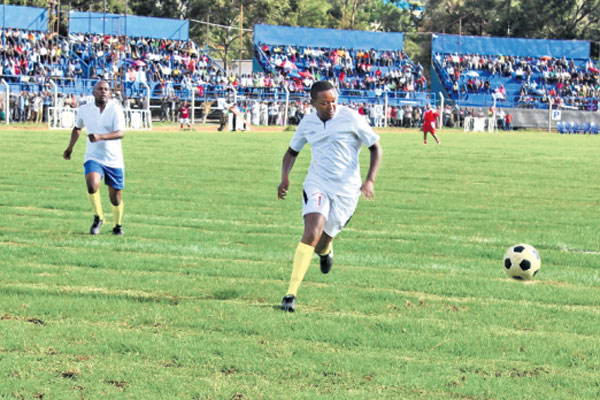
The Moi stadium in Kisumu has been undergoing the process of rehabilitation and repairs for at least four years. As far back as 2009, FIFA offered to work with the powers that be in Kisumu to start rehabilitating the stadium. FIFA was to provide among other things, artificial turf. At that time the authorities declined FIFA’s offer. In 2011, FIFA again announced that they would send it’s renowned Goal project to the lakeside city. Once again for various reasons, the project never took off.
In 2012, FIFA once again renewed their goal project pledge. FIFA development committee meeting held in Zurich on 27th march 2012 approved the funding of a priority project to the Kenya Federation who has already identified Kisumu Municipal Stadium as the beneficiary.
In a letter addressed to FKF Chairman Sam Nyamweya, the FIFA president Sepp Blatter said: “In light of my long lasting commitment to universality of football and of the necessary solidarity within the football family, I am pleased to inform you that your association is one of the countries selected as to benefit from the goal project.”
On January 9th 2012 for the facelift of the Moi Stadium in Kisumu to international standards started. FIDA funded the project to the tune of Ksh. 100 million The Kenya government contributed Ksh.50 million from the to be used to for the refurbishment of the perimeter wall.
In the beginning of 2013, FKF chair Sam Nyamweya offered further impetus when he announced that Kisumu would host the 2013 CECAFA cup. It was a glorious opportunity as Kisumu had not hosted an international match in any sport for well over 2 decades.
However as we write, the CECAFA cup is 3 days away and there are still fears that Kisumu stadium may not be ready amid finger pointing by county officials. FKF offered a reprieve by saying that if Kisumu was not ready to host first round matches, they would host some quarter final matches. Even that opportunity appears to be in danger of being spurned since the large garbage pile outside the stadium has not been relocated and the work of laying the artificial turf is incomplete.
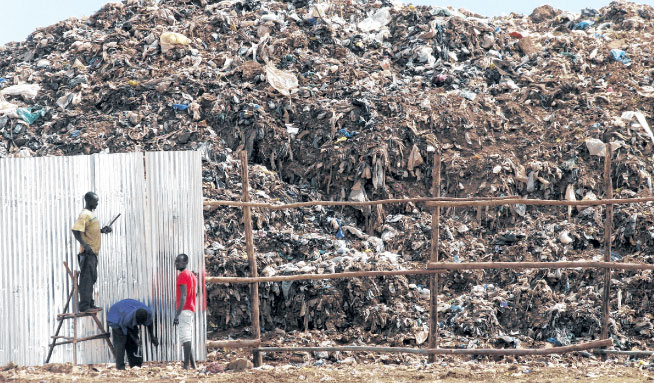
It is a stark contrast to what has happened in Machakos where governor Alfred Mutua has overseen a rapid transformation that has taken the Machakos stadium from a barren desert with no terraces to a lush green field with glittering terraces. The difference here is the seriousness with which governor Mutua has taken the project. He is often seen at the site himself, ensuring that progress is happening on a daily basis and the contractors are being held accountable for time and quality of the work.
As pointed out in a previous column, sports fans across the country ought to applaud Governor Mutua. Here is a man who realizes the importance of sport in keeping the youth busy and engaged in positive activities. He also correctly realizes that his county stands to gain financially by hosting big games. With that glittering new stadium, many KPL teams can now play matches there. In fact it should come as no surprise if one KPL team decides to play most of their home matches in Machakos.
Contrast this with the scenario that pertains in Kisumu. The county is already blessed to have two teams in the Kenya premier league that could be enticed to play their home matches at Moi stadium. And of course Gor Mahia which historically pulls large crowds in Kisumu could be convinced to play some home matches in Kisumu. Not only would this provide revenue for the county but local businessmen could benefit significantly by selling their wares to traveling Gor Mahia fans.
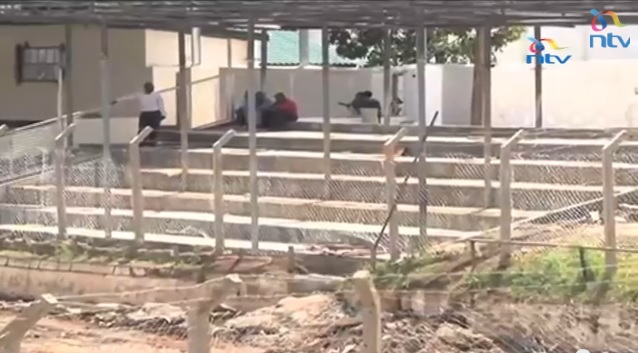
Remember that in the 1970s and 1980s it was a tradition for Gor Mahia to play at least one of their Africa cup matches in Kisumu. That idea fell by the wayside because the officials in charge of Kisumu had left the stadium became derelict with a collapsed perimeter fence and a colossal garbage pile right outside the stadium making it impossible for any team to play matches there.
Machakos Stadium transformation
Work on the stadium started in earnest in October of 2013. In Kenya it is tradition for construction projects especially those paid for by the government to be plagued by delays and cost over-runs. Governor Mutua has proven to Kenyans that this need not always be the case.

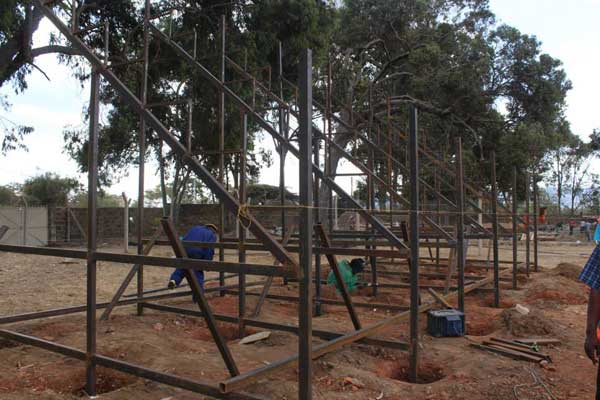
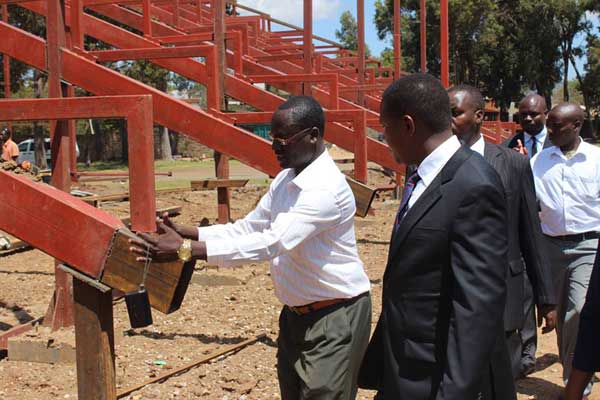
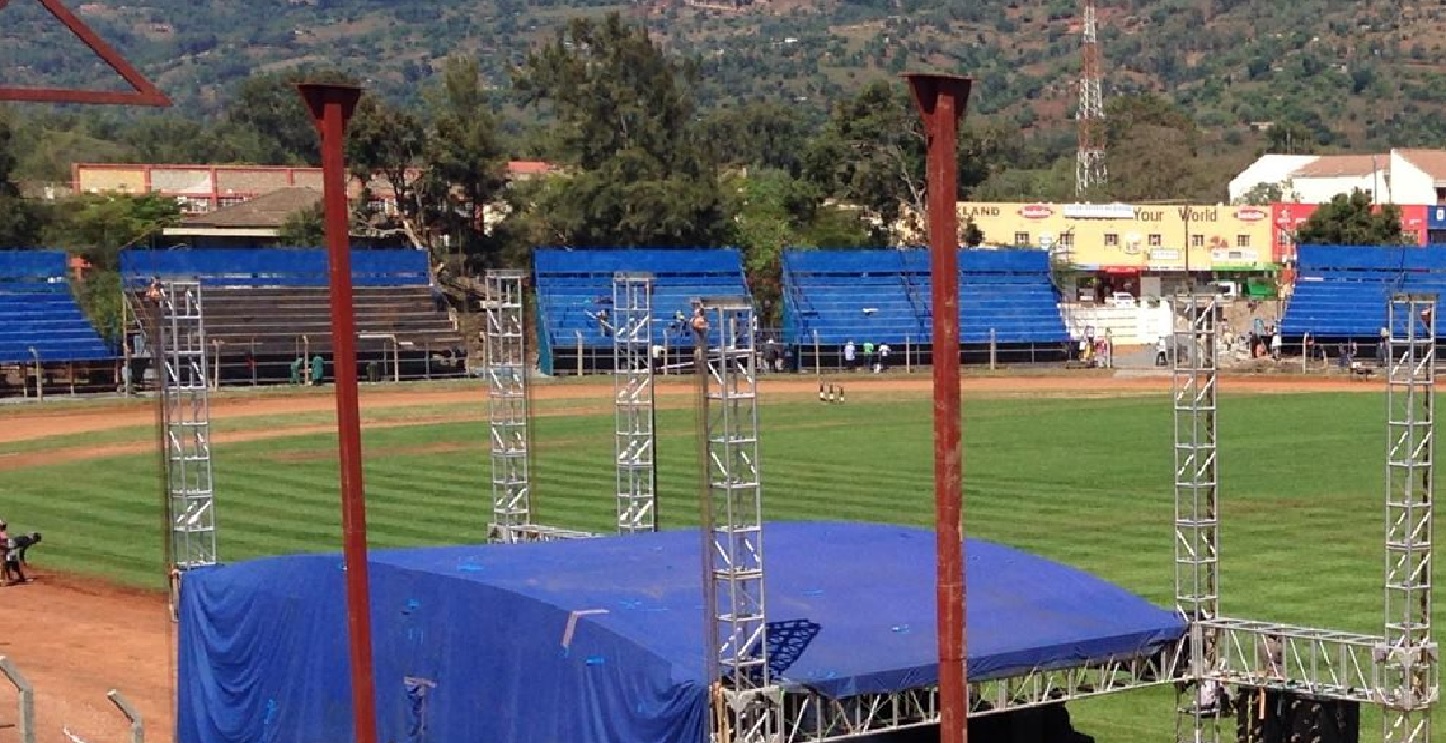
The re-construction of the stadium in Mombasa has also been plagued by poor management but their issues pale compared to the malaise in Kisumu. And they at least are assured of finishing the construction before the start of the CECAFA cup.
Go to Kenya Football Page |
